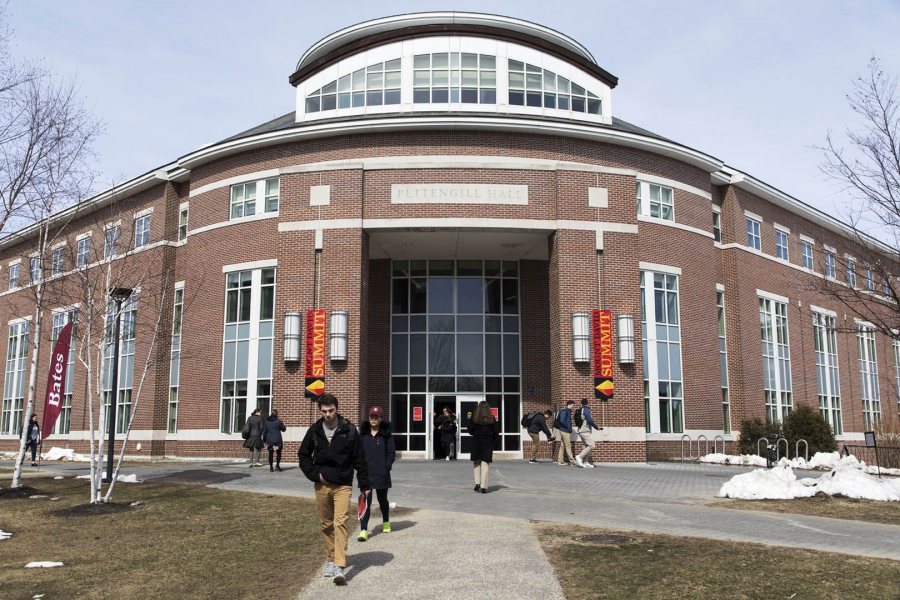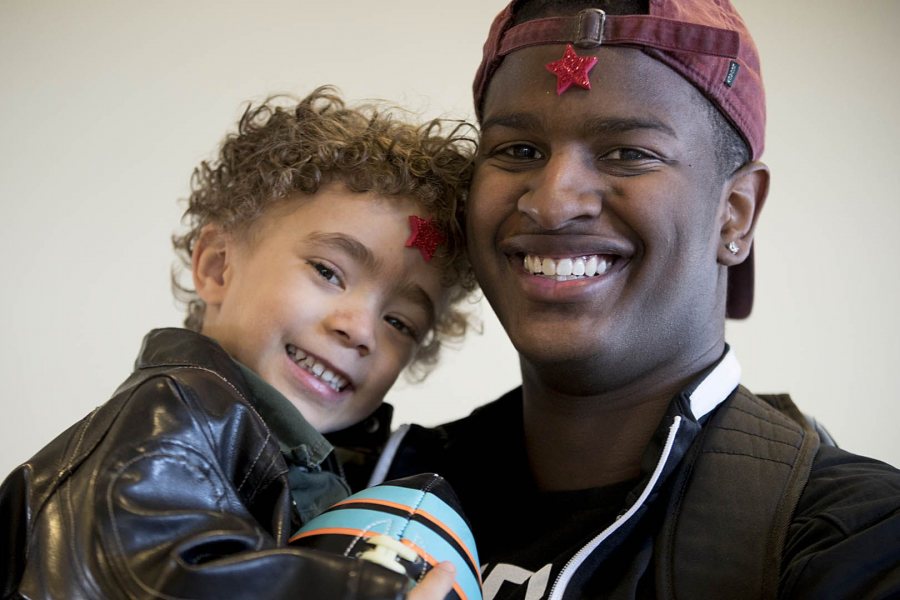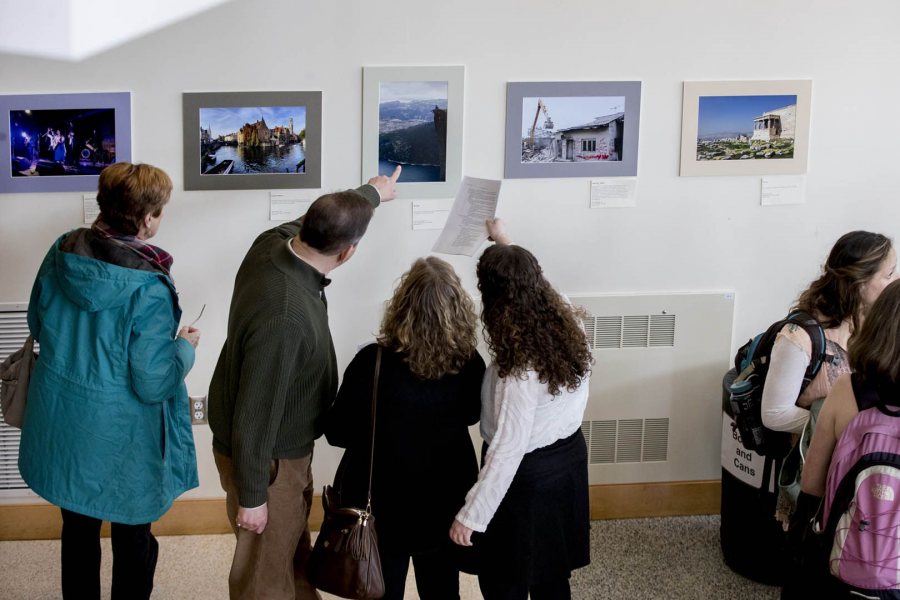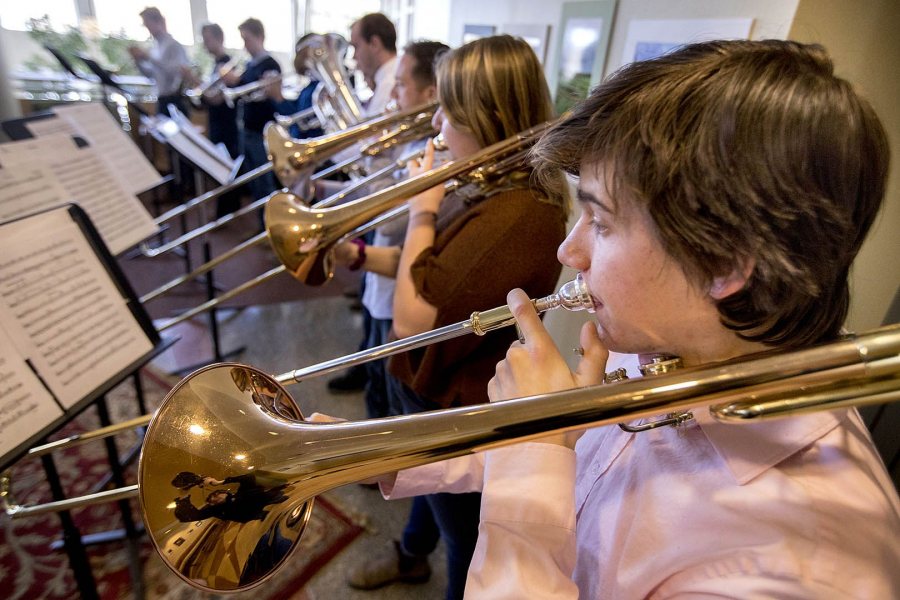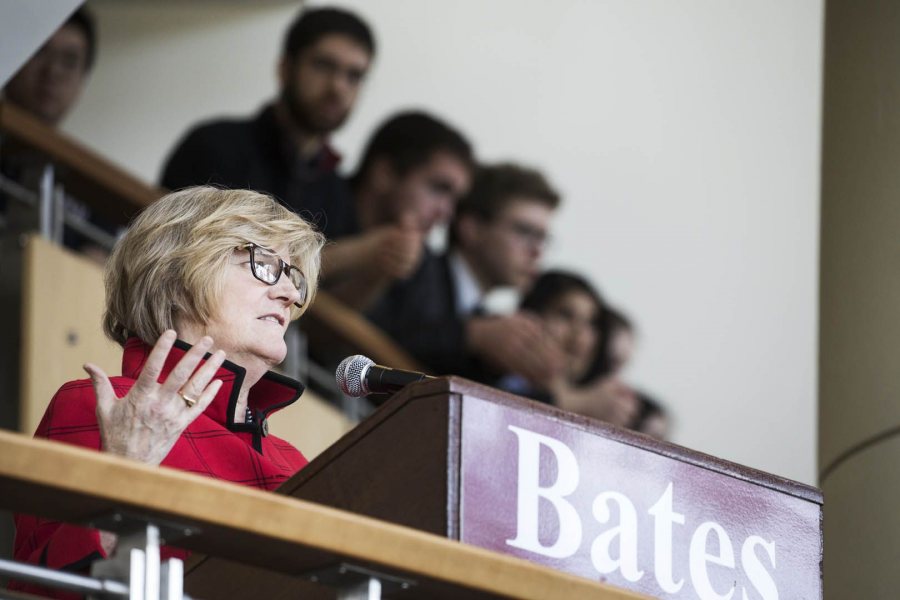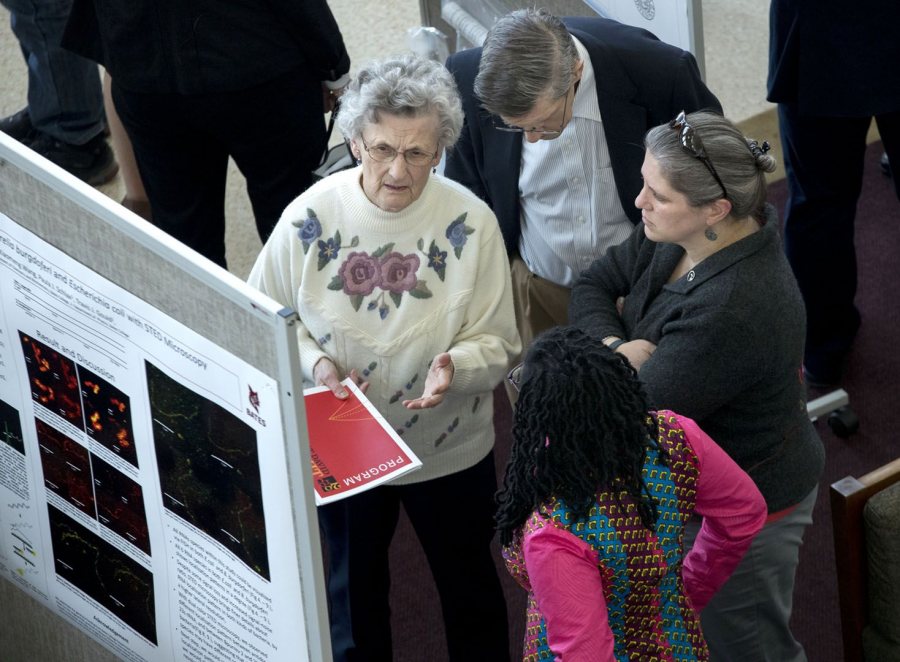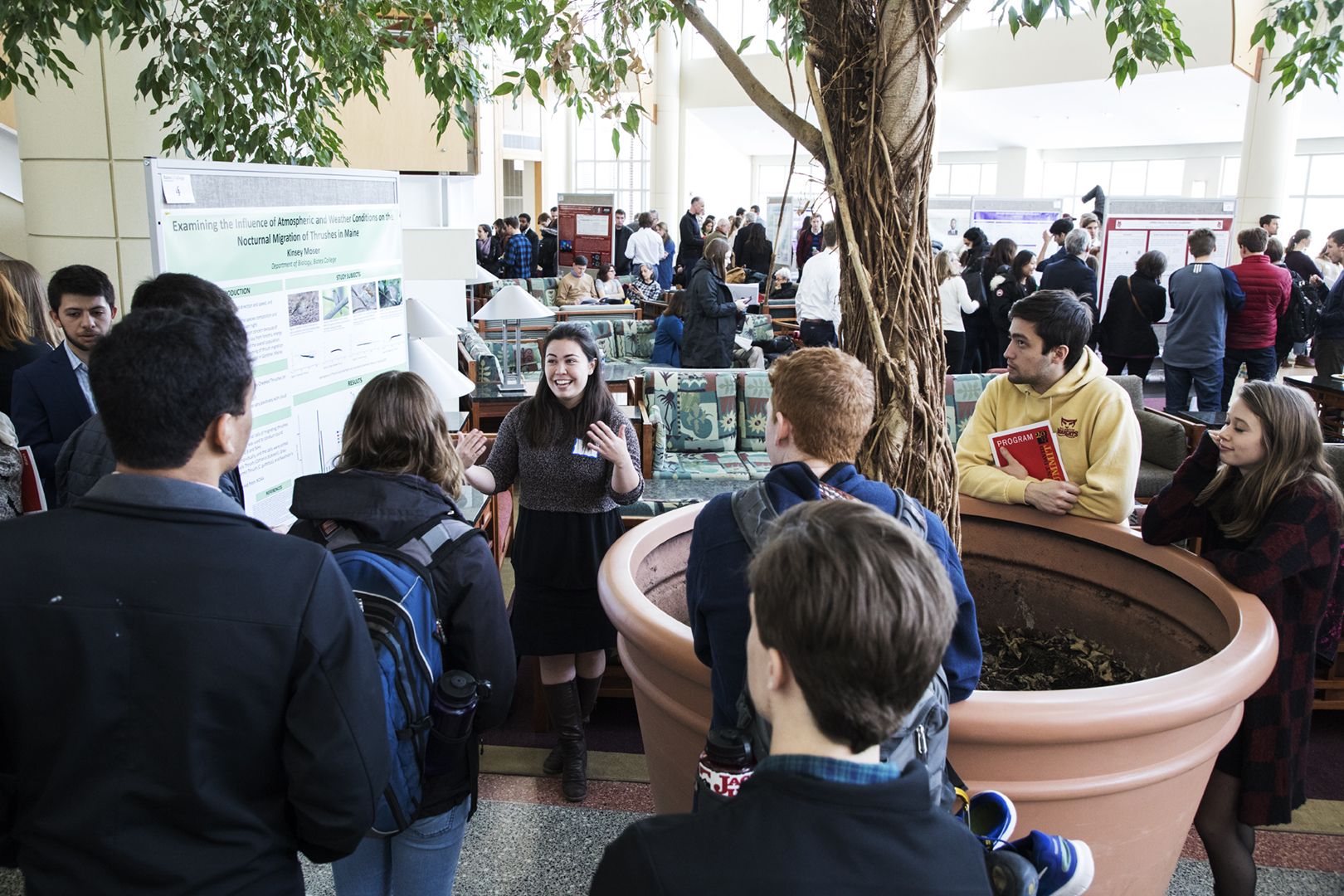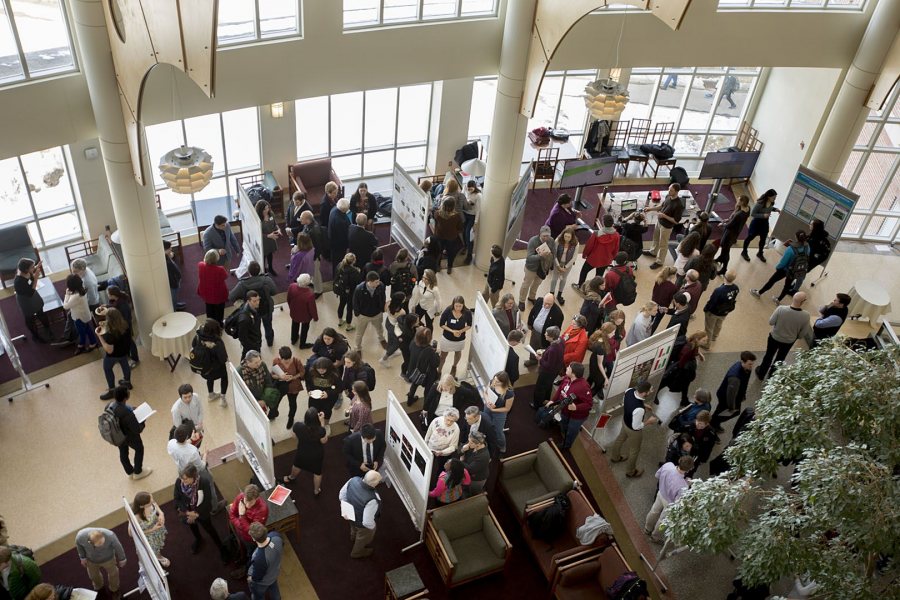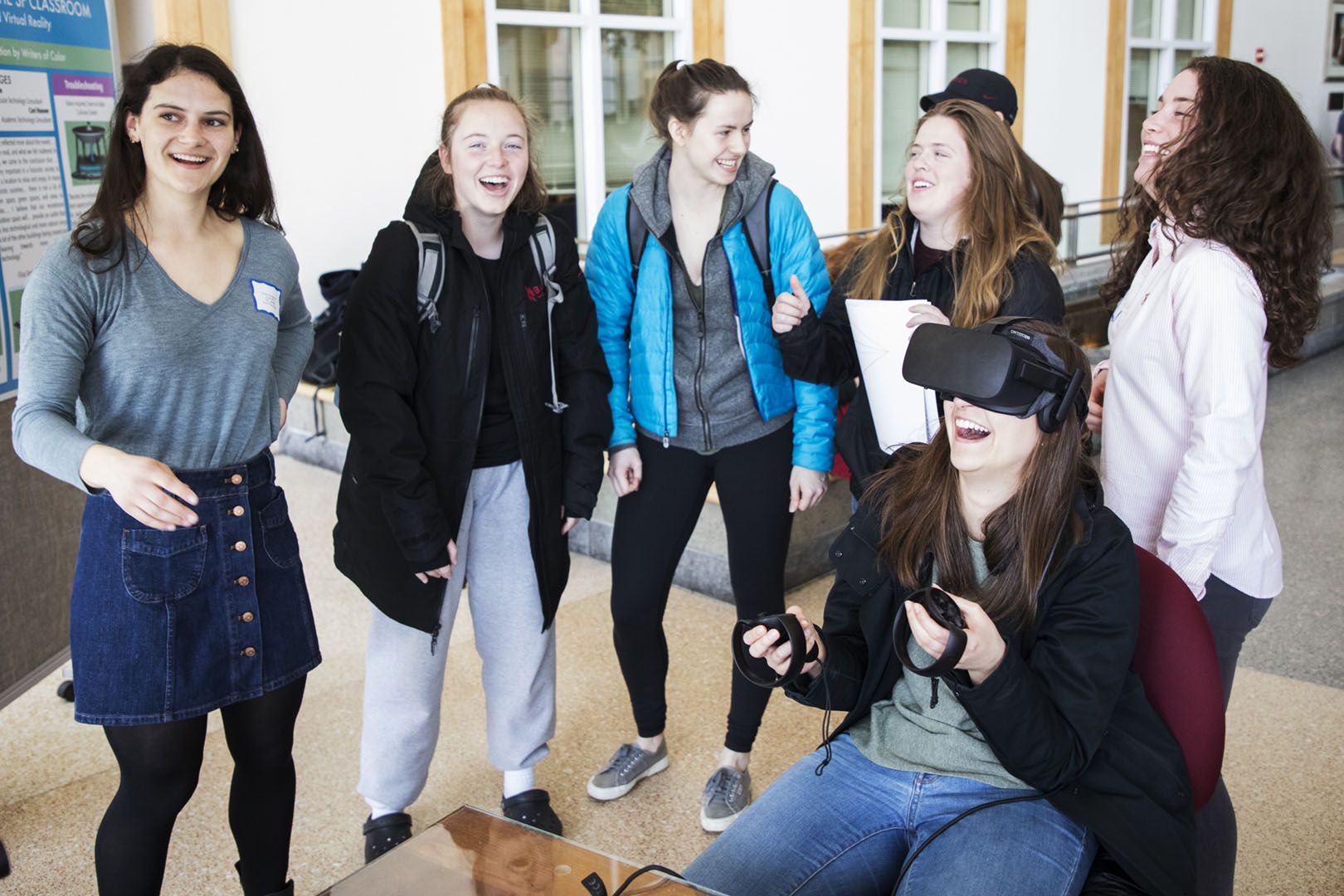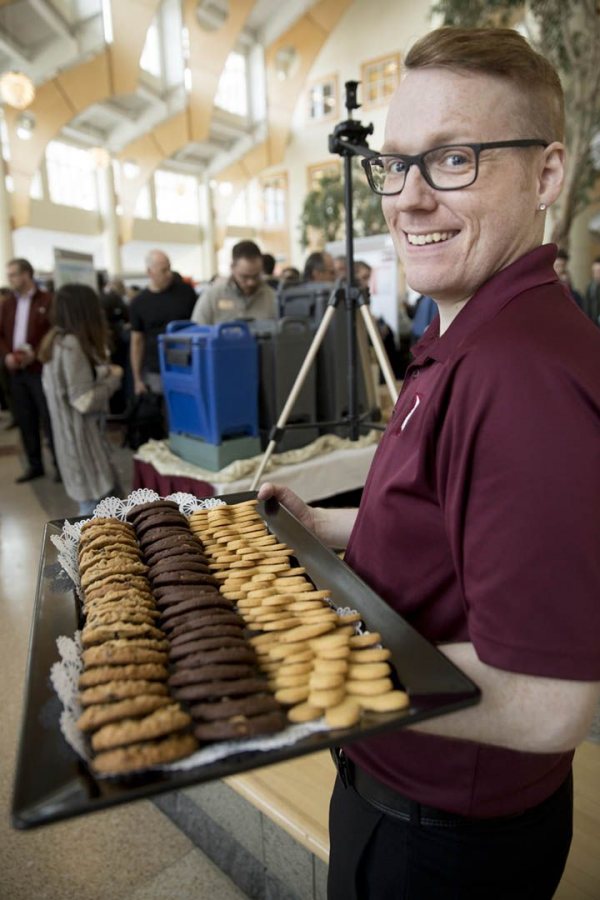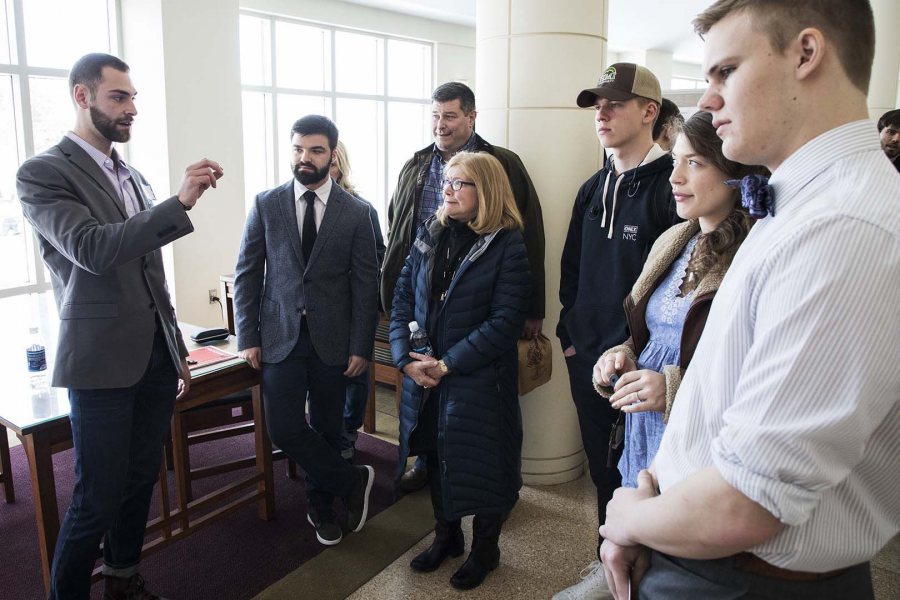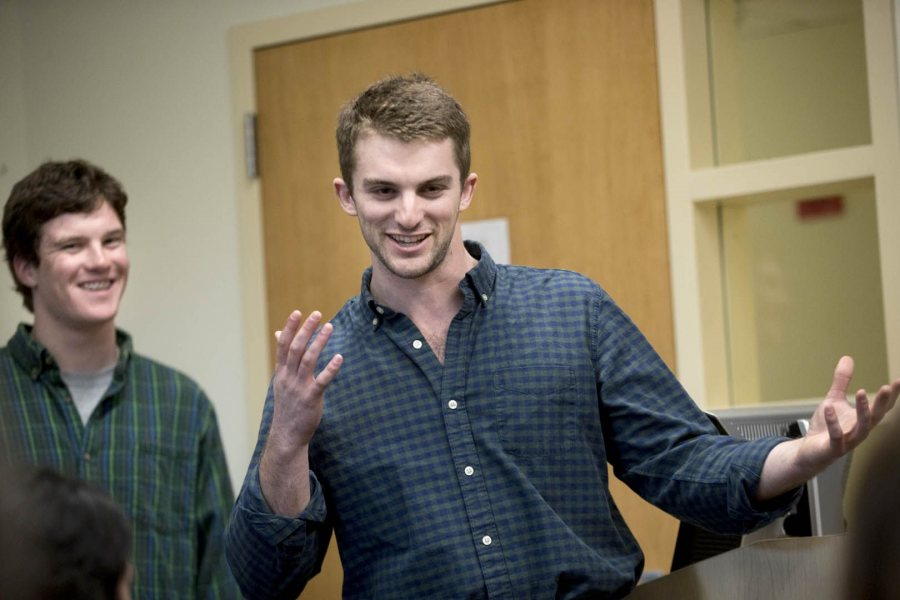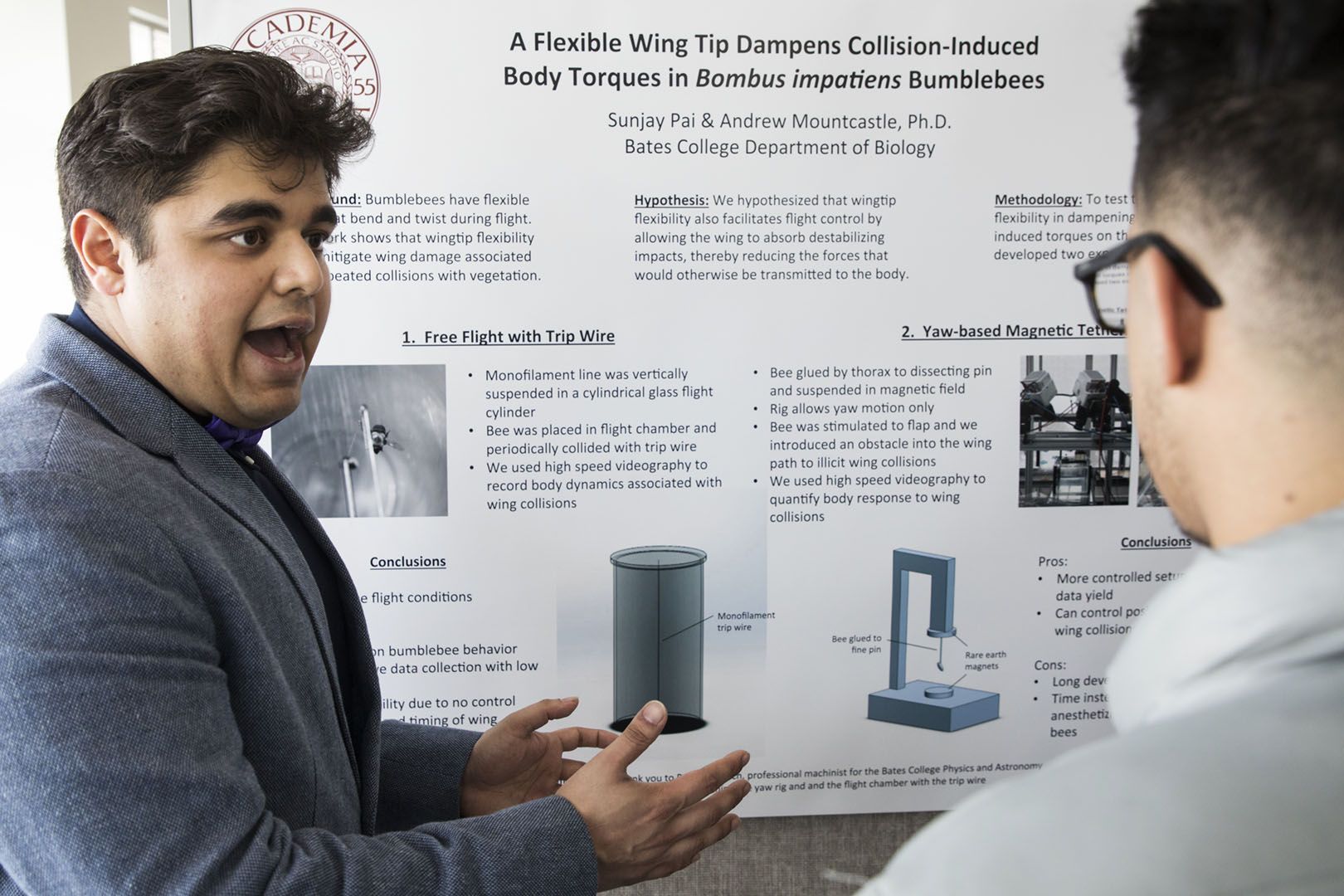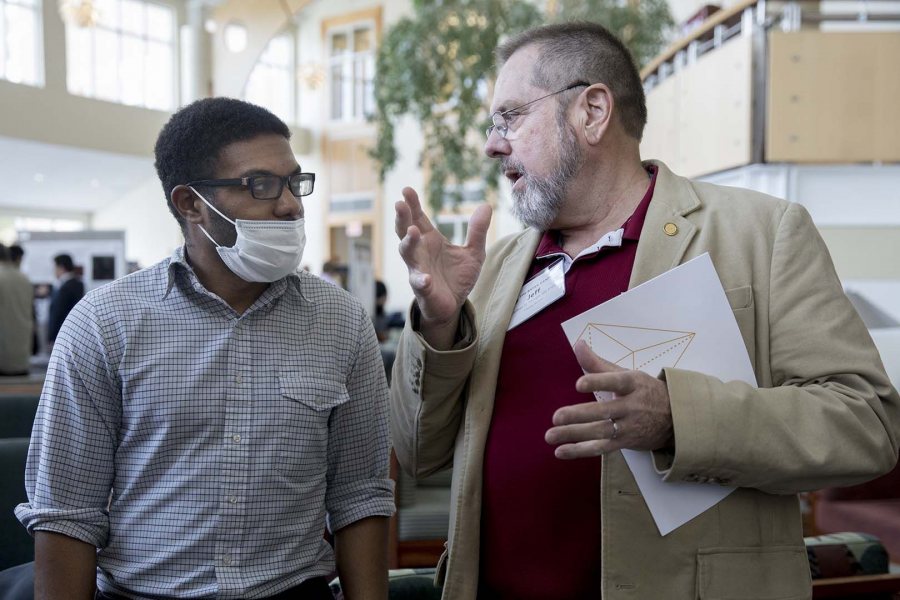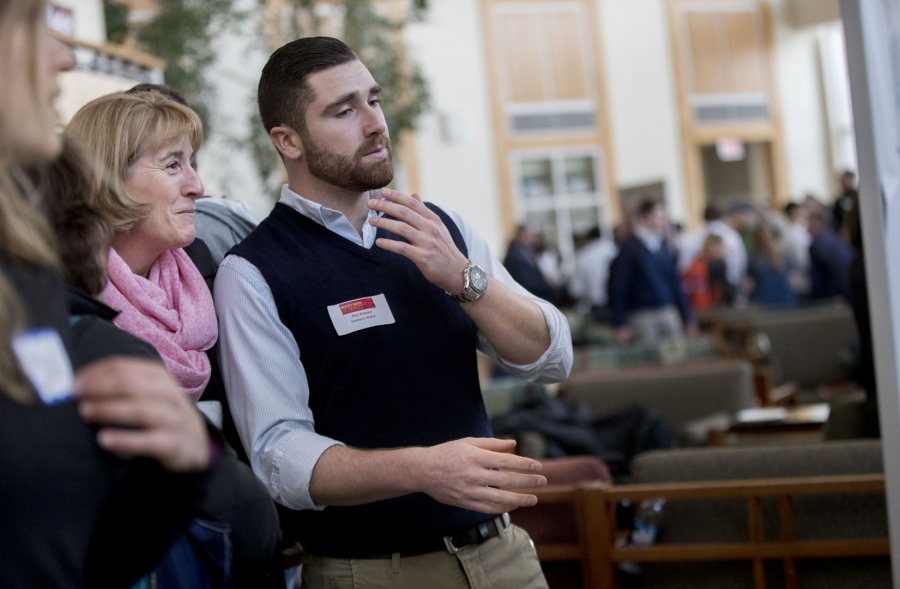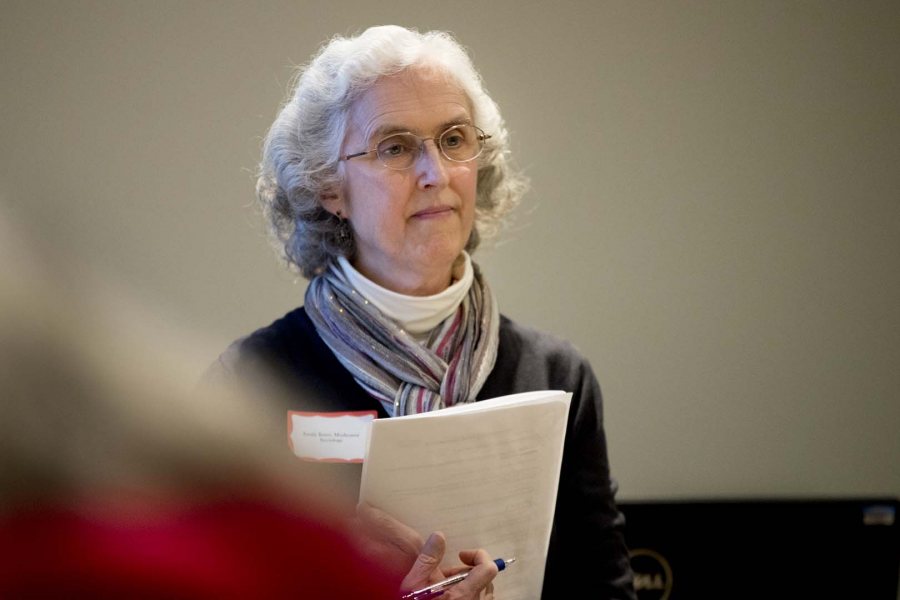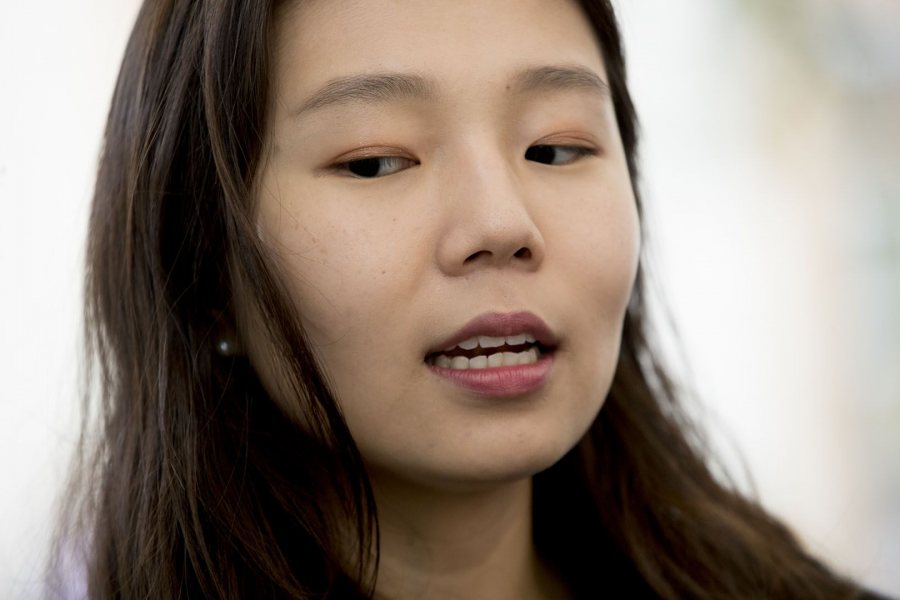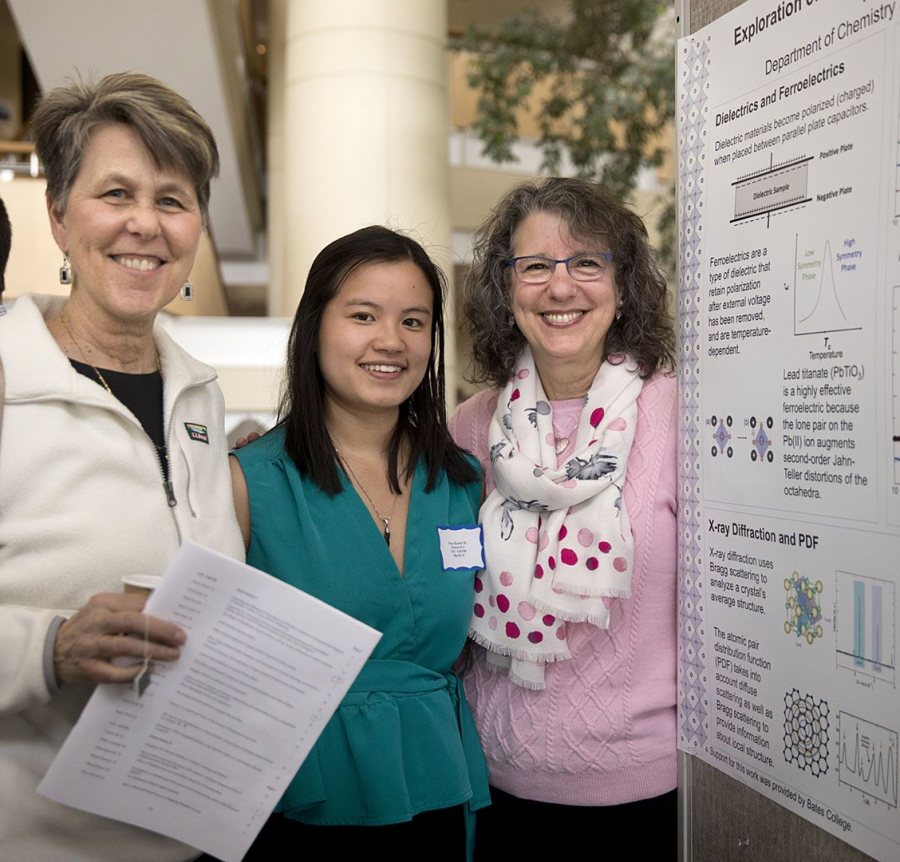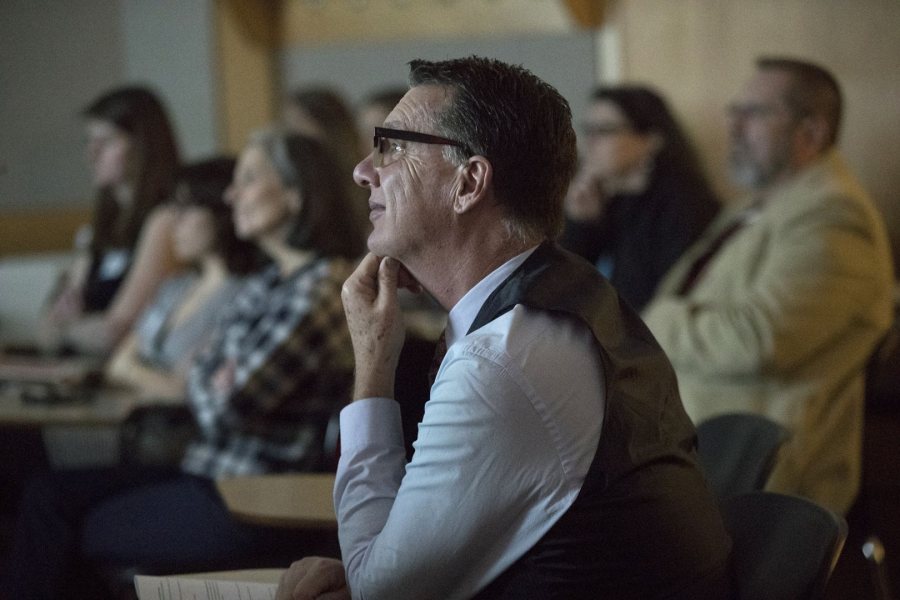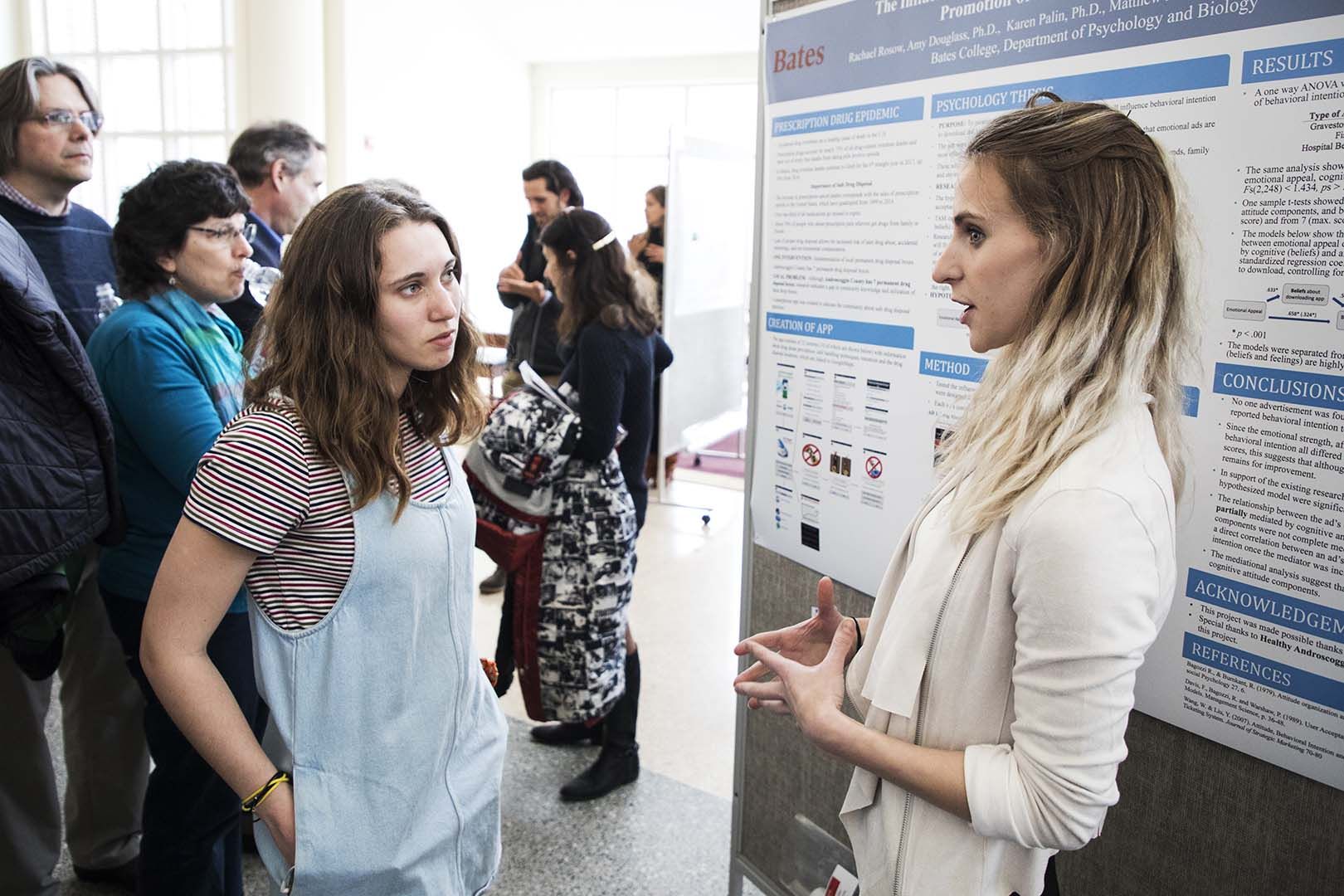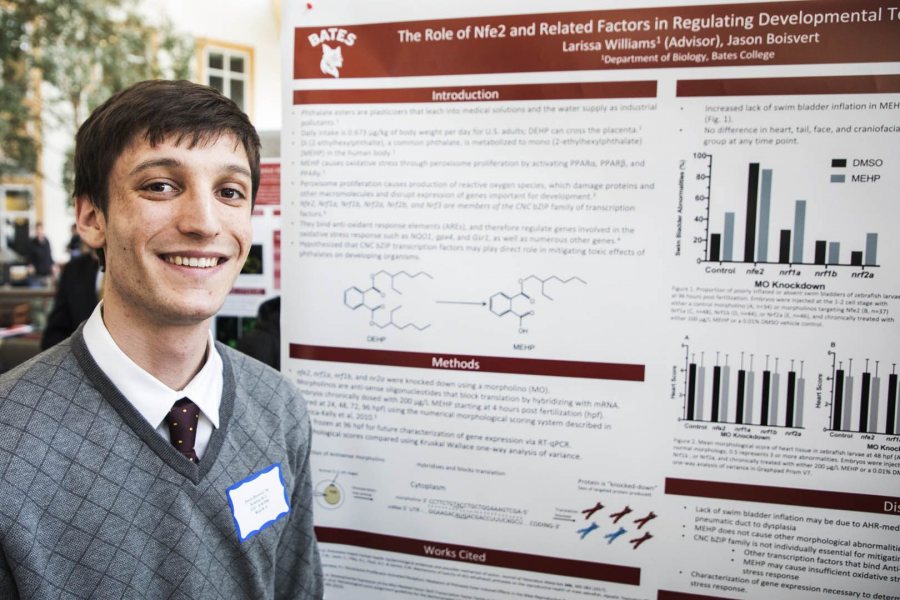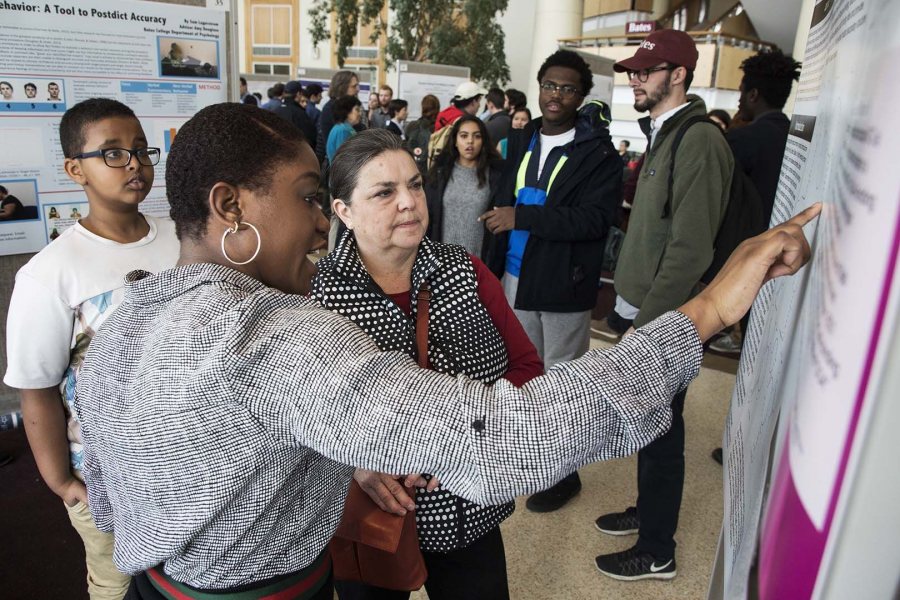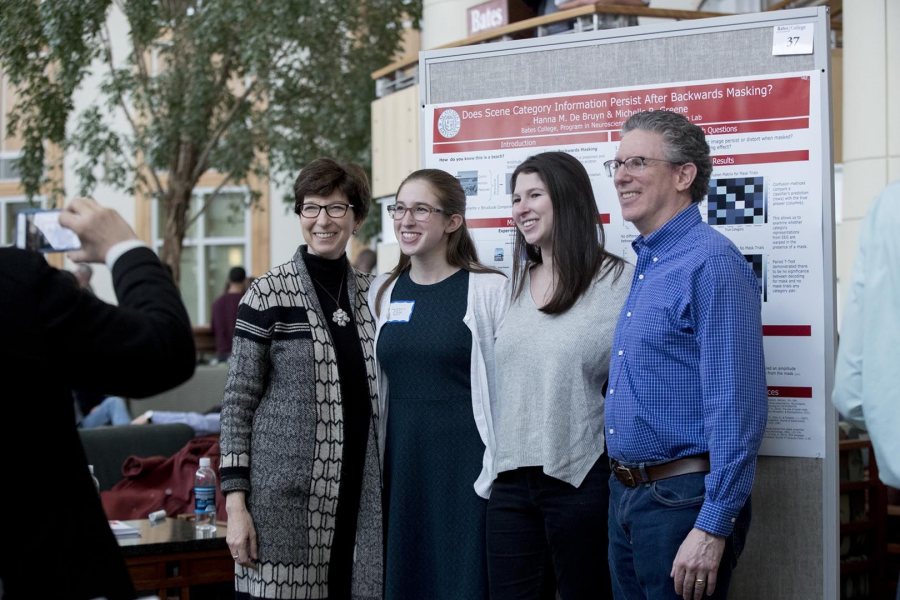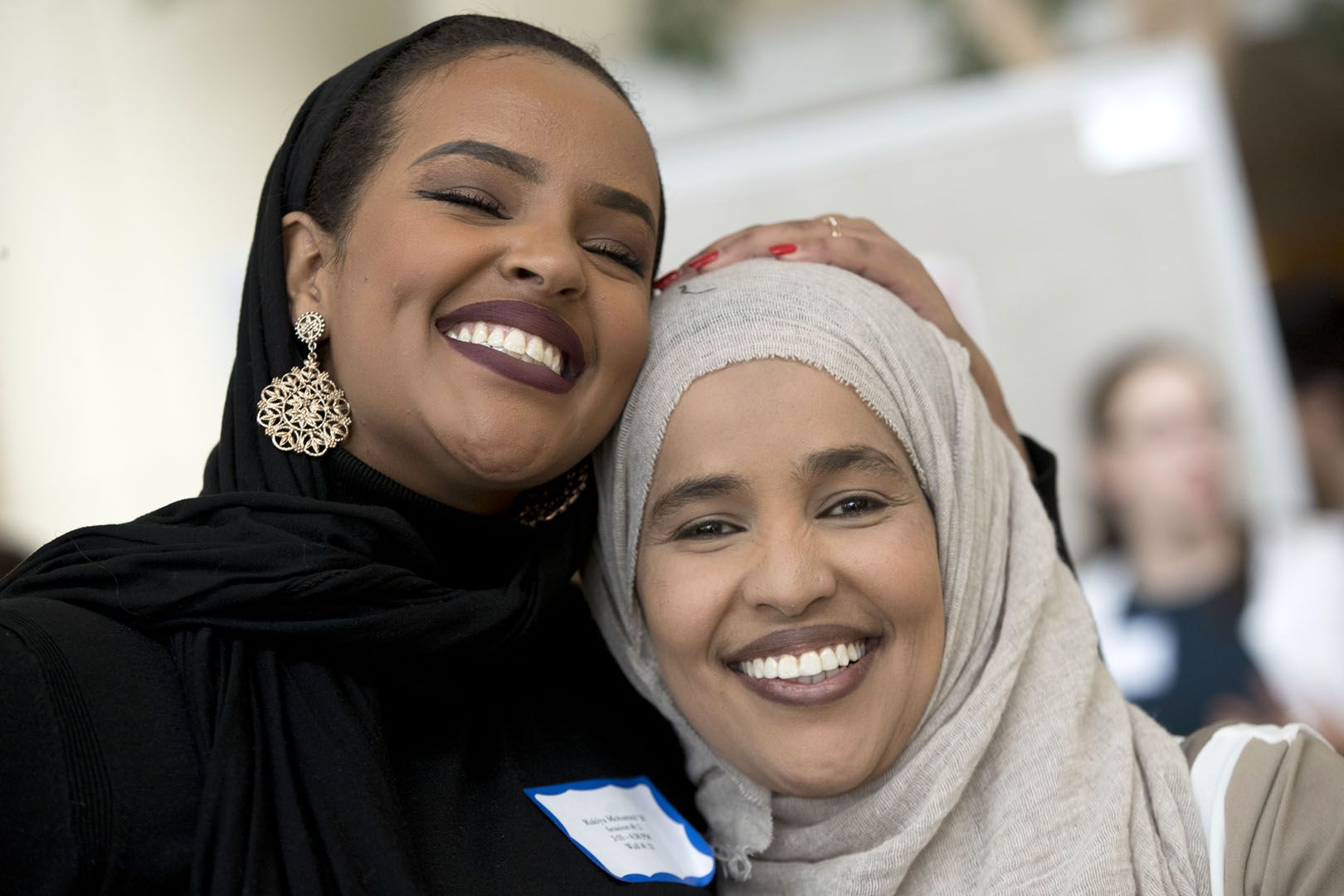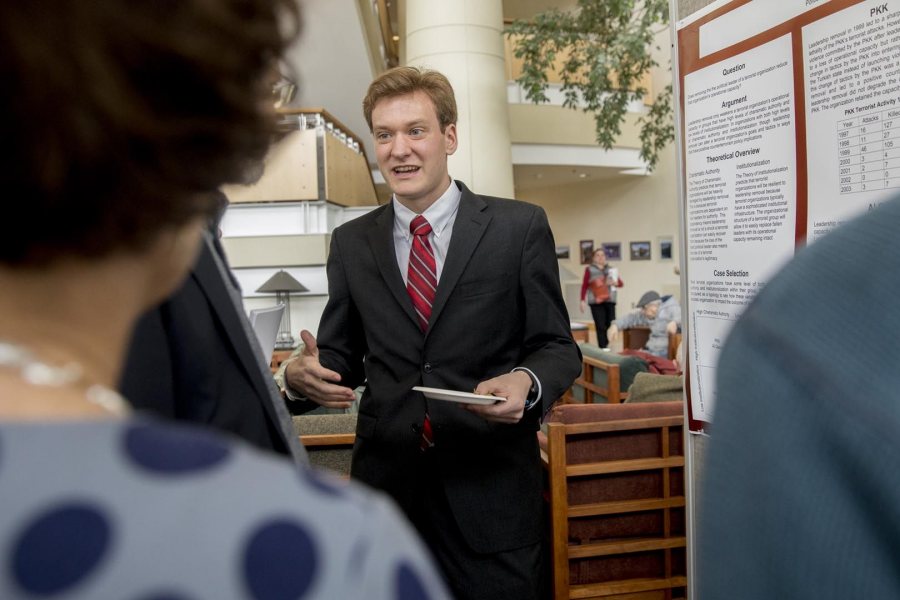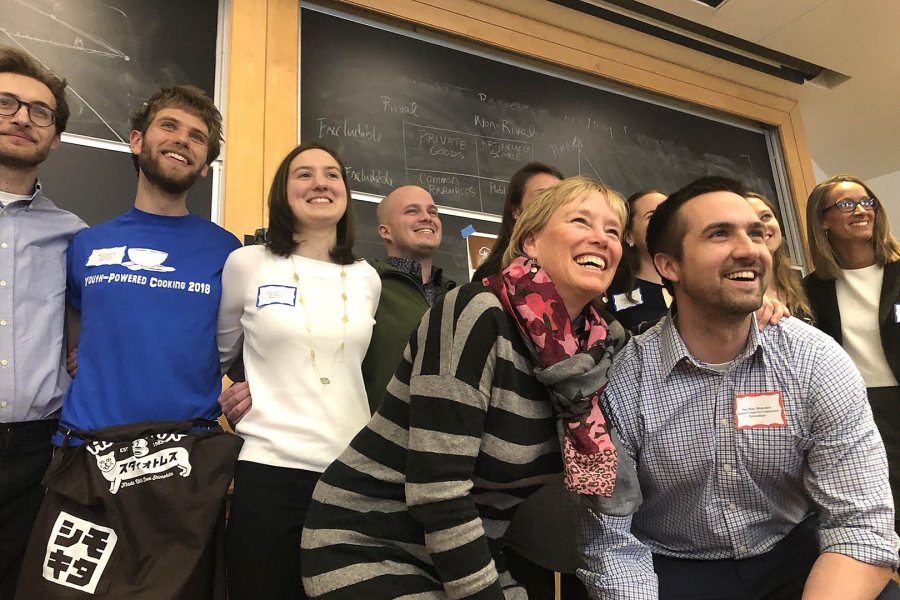He may have been thinking about a more personal kind of pedagogy, but when lyricist Sammy Kahn wrote the 1953 hit “Teach Me Tonight,” he could have been talking about the Mount David Summit:
Let’s start with the A B C of it
Getting right down to the X Y Z of it
From anarchy (and why Bates needs a course on it) to zebrafish (and their responses to toxins), the summit is a living, breathing encyclopedia of student achievement at the college.
Held March 23, the 2018 edition was the 17th in a series that has become one of the college’s most anticipated events, drawing family, friends, and potential students to join the campus community in celebrating Bates academics.
This year, more than 270 students presented their research via posters, panels, literary readings, video screenings, and more.
In short, as Sam said, this is the perfect spot to learn. And so here for your pleasure and edification is a sampling from the smorgasbord of smarts that was the 2018 Mount David Summit.
1:01 p.m. — Sunny Summit
On Alumni Walk, where snow is grudgingly giving way to spring, the destination is Pettengill Hall and the 2018 Mount David Summit.
1:11 p.m. — A Day of Stars
Before the summit kicks off at 1:30, Areohn Harrison ’20 of Rockville, Md., poses with Everett, age 3 1/2, who is the son of Bridget Harr, lecturer in sociology. The stars on their foreheads were courtesy of Professor of Sociology Emily Kane.
1:15 p.m. — Off-Campus in Focus
As they wait for the opening ceremony, attendees view the annual Barlow Off-Campus Photography Exhibition. They’re looking at an image of Julia Kavanagh ’18 of Pelham, Mass., who is sitting atop Preikestolen, a cliff looming 604 meters above the Lysefjorden in Forsand, Norway.
1:26 p.m. — Prelude to a Summit
John Turner ’21 of Falmouth, Mass., helps the Bates Brass Ensemble kick off the 2018 Mount David Summit. They accompanied the Bates College Choir in a musical prelude, the Allegro vivace from John Rutter’s setting of Gloria in excelsis Deo.
1:36 p.m. — ‘The Best of Our Students’
In her welcoming address, President Clayton Spencer encourages attendees to explore all Mount David Summit has to offer – the experiments, the analyses, the ideas, the conventional wisdoms overturned.
But she also admonishes them to remember that the summit is but a “snapshot” of something much greater.
“It’s just one day on our students’ four-year journey through Bates,” she says. “But it’s a day that shows the best of who our students are — their curiosity, their persistence, their precision, their exploration, their creativity. It just amazes me every year. It’s one of my favorite days.”
1:41 p.m. — Introduction to the Introductory
Clockwise from left, Mary Morton Cowan ’61, her husband, Carl ’61, and daughter-in-law Marianne Nolan Cowan ’92 talk to Gift Kiti ’18 of Mombasa, Kenya.
Kiti explained her examination of introductory STEM courses at Bates, with a special interest in exploring effective teaching strategies that serve under-represented groups in the sciences.
1:45 p.m. — A Brush With Thrushes
As some of her listeners lean on one of the ficus trees that grow in Perry Atrium, Kinsey Moser ’18 of Fernandina Beach, Fla., explains how she uses acoustic monitors to examine the influence of weather on thrush migration in Maine.
1:52 p.m. — Above the Summit
Home to dozens of posters in three viewing sessions, Perry Atrium is the heart of the Mount David Summit. Here you can hear about encryption in bank data or about hypoxia in rats. Then, before diving back in, you can catch your breath, reset your sight with a glimpse of Lake Andrews, and restore yourself with cookies, cheeses, and beverages.
1:58 p.m. — ‘How Do You Create a World?’
One corner of Perry Atrium attracts a steady stream of visitors throughout the summit.
The presenters, students in Visiting Assistant Professor of English Tiffany Salter’s course on science fiction writers of color, outfit interested visitors with virtual reality headsets.
Here, Eliza Statile ’19 of Ipswich, Mass., joined by friends, has donned the headset.
“You don’t walk in here, you teleport,” is the advice to viewers like Statile, who find themselves immersed in a 3D-rendered block of buildings. To get around, they use a joystick to point to where they want to go. Don’t go into the canal, they are told. It’s hard to get out.
In this VR world, visible on screens to passers-by, waters have risen substantially, and merfolk have emerged from the deep to live among humans.
During the semester, Salter’s students explored how sci-fi writers build worlds and how the future-imagining of science fiction is similar to the future-imagining of social justice activism. The semi-aquatic VR world, which the students built with the help of Information & Library services, was a way for them to get their hands dirty, so to speak.
“This was a different way to creatively engage with how you make decisions about the story of the space,” Salter says. “How did it get to where it was? What belongs in this space? How do you create a world?”
2:09 p.m. — Something for the Inner Scholar
Thinking makes you hungry, so Ben Smith of the college’s catering operation keeps the cookies coming.
2:14 p.m. — A Different Spin on the Fidget Toys
Driving to Bates from Norwell, Mass., Steve and Debbie Schlueter discussed their son Kyle’s senior thesis. Like many parents and friends of thesis-writers, they knew the gist but were sketchy on the details.
“We knew it was fidget spinners, like the Christmas present,” Steve says. “We were excited to hear what it is he’s been working on and the results.”
At his poster, Kyle fills them in. It’s pretty simple, really: The handheld spinning toys, all the rage in 2017, were marketed as a way to help kids concentrate and even mitigate attention-deficit disorders. Kyle decided to see if that was true.
It isn’t, as Schlueter explains to folks, including lots of Bates parents who stopped by his poster. Fidget spinners, like other toys, take up cognitive space, making other tasks take longer.
“It’s been really cool to see some of the parents come around and say, ‘I have kids that use these,’ saying that they help,” Schlueter says. “Sure enough, I had to prove them wrong, show them differently.”
2:22 p.m. — In the Green Room
The student EcoReps work on behalf of the college on sustainability initiatives, and a big crowd is attending their panel on ways they help Bates meet its ambitious environmental goals.
Here, EcoRep Matt Reback ’18 of Potomac, Md., urges listeners to be vigilant in their sustainability efforts and environmental responsibilities. “Be the guy who picks up the cup,” he says.
2:41 p.m. — Bees That Go Bump
For his thesis, Sunjay Pai ’18 tried to get bees to fly into things.
Pai, who is interested in both physics and biology, worked with his adviser, Assistant Professor of Biology Andrew Mountcastle, to figure out how much a bumblebee’s body spins when it collides with something — data that could have implications for things like drone development.
They originally set out to study wasps, but all their wasps died.
Then, with the help of staff machinist Peter Beach, they built a container with a wire running top to bottom, in the hopes that bees put inside would fly into the wire. It turns out bees are rather good at avoiding barriers, so they only got a few good collision videos over the course of several months.
So Beach built them a more sophisticated device, and they put little magnets on the bees to facilitate a collision. That did the trick.
The constant trial and error “showed me how real science is done,” Pai says — and he loves it. “Now I want to pursue a Ph.D. in functional morphology.”
2:52 p.m. — An Ode to Coding
Kwamae Delva ’18 of Conley, Ga., draws a consistent crowd, including Jeff Sturgis ’69, an Alumni Council member and the College Key president, as he talks about analyzing high-velocity outflows in compact starburst galaxies.
In other words, for his thesis he learned about galaxies in the throes of star formation by studying the gases that leave those galaxies.
Delva worked closely with Assistant Professor of Physics Aleks Diamond-Stanic, conducting some of the research at Apache Point Observatory in New Mexico.
Though Delva capped his Bates career with a study of other worlds, the work taught him a skill that has very real applications in this world.
“The best part has been learning how to code,” he says. “I decided to change my career because of it. It’s been amazing learning how to codify everything you can, and how the simplest thing like having the space bar in the wrong spot can completely stop the code from working.”
2:58 p.m. — Bee Serious
As his proud mom, Sheryl Watson, listens, Max Watson ’18 of Yarmouth, Maine, talks about his research on certain flowers and a type of insect that pollinates them, the bumblebee.
The relationship between flowers and pollinators is important, Max says, because “one of the core intentions of conservation ecology is understanding the factors that affect the reproductive success of threatened plant populations.”
3:15 p.m. — ‘Capable, Passionate, Dedicated’
Professor of Sociology Emily Kane says that the Mount David Summit is, hands down, her favorite academic day of the year.
“It makes me feel so re-energized as a faculty member,” she says.
After all those uneven moments in a professor’s day-to-day work with students — when they need a deadline extension, or they haven’t done the reading, or whatever — “this reminds me how amazingly capable and passionate and dedicated they are.”
3:16 p.m. — Her Take on Tech
Hyewon Shin ’18 of Gyeonggi-do, South Korea, who intensively interviewed Asian American women working in the tech industry about the racism and sexism they faced, found less direct discrimination than she expected.
The project had the rigor of a qualitative sociological study, Institutional Review Board approval and all. But it also had a personal bent: Shin, who is interested in marketing and healthcare technology and interned in San Francisco this summer, wants to go into the tech industry herself.
She said the results were encouraging, but she also appreciated the complexity of race and gender in the tech industry. “I think it’s important to inform people and let them know what are the fundamental issues and come up with a solution,” she says.
3:25 p.m. — Getting the Lead Out
Anna Kandel ’18 of Pelham, Mass., poses with her moms, Andrea Kandel (left) and Georganne Greene. Anna conducted chemistry research: “Applications of the Underlying Chemistry in PbTiO3 for the Design of Lead-free Perovskites.”
3:27 p.m. — The Four Seasons (or More)
As part of the summit presentation An Image of Local Francophonie, Julia Nemy ’18 of San Francisco screened an oral history video she created for her senior thesis project in French and francophone studies.
Nemy’s focus was Lewiston’s Djiboutian population, which the video portrayed as a tight-knit community proud of its culture, open-mindedness, and resilience. Nemy’s subjects talked about language issues, adjusting to life in a new land, and life in Lewiston — and pointed to Maine weather as one of their biggest challenges.
Explaining that Djibouti, on Africa’s east coast, has only two seasons, one young man complained that the weather here changes too often. “I have the impression that I’m watching a movie or something,” he said.
Nemy’s adviser was professor Mary Rice-DeFosse. Here, Professor of French and Francophone Studies Kirk Read watches Nemy’s film.
3:35 p.m. — Androscoggin County According to MTurk
Rachael Rosow ’18 of Avon, Conn., considers herself lucky: She was able to make her two theses, in biology and psychology, work in tandem.
For biology, she created a smartphone app for Healthy Androscoggin, a Lewiston-based public health organization. The app displays the location of drug disposal boxes around the county and provides information and resources to help combat drug abuse.
For psychology, Rosow created a survey to test the effectiveness of different advertisements for the app. But here she ran into a minor roadblock: Bates students, usually a go-to pool of test subjects for psychology experiments, weren’t the app’s intended audience.
“I was looking for people with the same age, education level, annual income, and ethnicity that is reflected in Androscoggin County,” she said.
So, with a grant from Bates, Rosow sent her survey to retail giant Amazon’s online marketplace for work that requires human intelligence, Amazon Mechanical Turk. MTurk administered the survey to her target demographic.
With the results, Rosow hopes the app will have a more immediate impact in the community.
3:42 p.m. — Making Every Word Count
Jason Boisvert ’18 of Concord, Mass., poses in front of his poster about his thesis topic: “The Role of Nfe2 and Related Factors in Regulating Developmental Toxicity of MEHP.”
We asked him to break down the title, word by word, so we might understand his research. Here goes:
Role: Boisvert wanted to figure out what something does.
Nfe2: That “something” is a protein: Nuclear factor, erythroid 2. Known as a transcription factor, this protein interacts with DNA and turns genes “on” or “off.”
Related Factors: Boisvert looked at a family of related transcription factors, including Nfe2.
Regulation: Boisvert wanted to know what, if any, function Nfe2 performs in an organism’s response to a certain situation. “Regulation is similar to ‘role,’” Boisvert says.
Developmental: Boisvert looked at zebrafish in their developmental stage, up to 4 days old, when “there are a lot of processes going on in relation to organs and other systems.” (Zebrafish, which share 70 percent of the same genes with humans, are often used in research.)
Toxicity: A chemical substance is toxic if it “creates adverse effects in an organism,” he says.
MEHP: This is the key acronym: It’s the short name for mono(2-ethylhexyl)phthalate, a chemical used in the manufacturing of soft plastics. MEPH and other “phthalates” have been linked to health problems.
Bringing this all together, Boisvert looked at a specific genetic response to a toxic chemical in baby zebrafish.
As so often happens with research, his findings are equivocal at this point, specifically whether Nfe2 helps reduce toxicity. Luckily, Short Term is ahead, during which Boisvert plans to collect more data to refine his conclusions.
Next year, Boisvert will be working at Boston Children’s Hospital in the laboratory of Leonard Zon, who uses zebrafish in his stem-cell research.
3:51 p.m. — Something That Stands Out
“A lot of medical schools like to see research projects,” says Brielle Antonelli ’18, who for her thesis studied the effects of different oxygen environments and certain drugs on rats. “Having a thesis at Bates is something that’s really specific and stands out” on the resume, she says.
The experience has taught her “a lot about respiratory responses and neurotransmitters. It’s a good baseline to have, a foundation to build off of, but it also has overlap for preterm infants who have different responses in breathing later in on in life.”
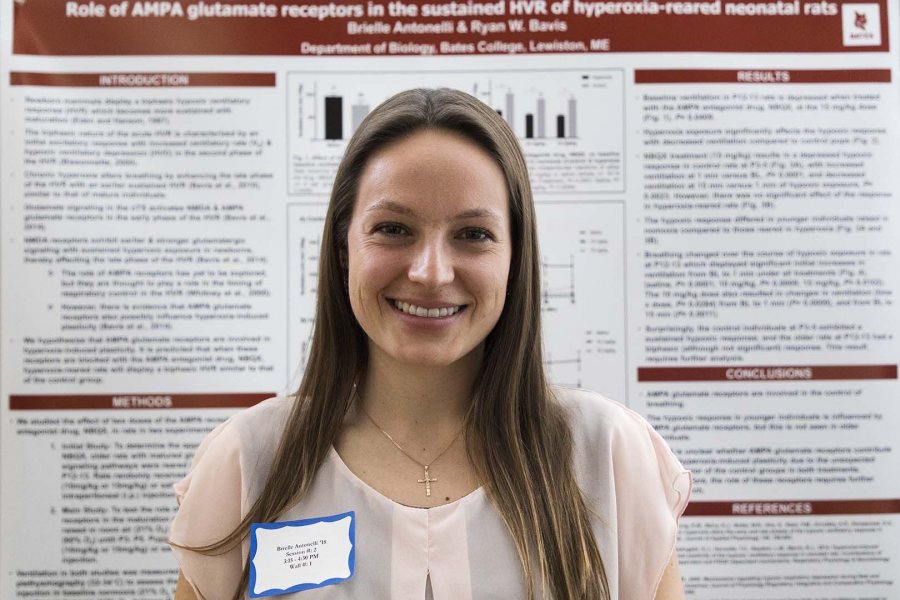
Theophil Syslo/Bates College
3:55 p.m. — The Energy of Pride
Raegine Clouden Mallett ’18 of Brooklyn, N.Y., loved presenting at the summit.
“It was so supportive,” she says. “People who came and sat and listened to me give my talk over and over again seemed genuinely interested in what I was doing and exuded an energy of pride, pride in what another Bobcat is doing. It made me feel proud of my own project.”
For Mallet, the summit culminated months of work, with plenty of twists and turns along the way.
She studied the regulatory mechanisms that are activated when the bacterium that causes Lyme disease transfers from tick to vertebrate. The project started off as a lab experiment, but defective materials meant that Mallett’s project had to shift from pipettes to programming.
So she ended up creating a theoretical model of translational efficiency, a procedure that future thesis students can use in their own experiments.
4:35 p.m. — Disturbing Memory
Hanna De Bruyn ’18 of Old Lyme, Conn., poses with family in front of her neuroscience poster. De Bruyn looked at “backward masking”: the phenomenon whereby a visual stimulus, known as the target, is followed by another stimulus (the mask).
The second stimulus prevents, or masks, our brains from processing the target and turning it into a memory. “We still do not understand to what extent the target is processed during the masking period,” De Bruyn says.
4:36 p.m. — The Leading Lead Tests
Rakiya Mohamed ’18 of Auburn, Maine, poses with her mother, Asmo Dol, after her poster presentation.
She did a comparative analysis of commercial lead-detecting instruments and commercial home kits. She also looked at an alternative type of home water-testing kit that is cheap to make, effective, and has a longer lifespan compared to kits now available. Mohamed is a double major in biochemistry and African American studies.
4:52 p.m. — Charisma vs. the Org Chart
Stephen Rowe ’18 of Gambier, Ohio, discusses his politics research. Rowe challenges a conventional theoretical belief about terrorist organizations: that high levels of “institutionalization” — that is, sophisticated institutional infrastructure — and charismatic authority are mutually exclusive.
The two can occur together, Rowe argues. In such cases, the removal of a charismatic authority such as Osama bin Laden can still effectively reduce the threat posed by a terrorist organization “because charismatic leaders choose to structure their organizations in ways that enhance their own authority, making the organization vulnerable upon leadership removal.”
5:56 p.m. — Hail Fellows Well Met
Darby Ray and Sam Boss, director and assistant director of the Harward Center for Community Partnerships, scooch down to pose with the college’s Community Engaged Research Fellows.
CER Fellows receive funding and mentoring for projects that advance public needs through significant academic research. The fellows engage deeply with community partners.
Here the fellows, all seniors, have just presented their research on topics including an examination of Maine’s local food movement through the lens of race; the impact of mentorship on at-risk girls in Lewiston; the quality of life of adults with cerebral palsy; and the effectiveness of a youth-powered after-school cooking program.
The four students at left are Dylan Franks, Keenan Shields, Jess Duserick, and Joe Tulip; at right is Allegra Sacco. Their fellow fellows are Zsofia Duarte, Danielle Fournier, Emily Halford, Julia Nemy, and Sophie Moss-Slavin.
